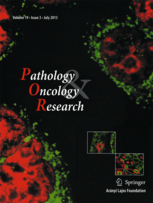Abstract Allergic contact dermatitis (ACD) is a cell- mediated, delayed type IV immunologic reaction. Atopic dermatitis (AD) is a chronic inflammatory skin disease that results from a complex interaction between immunologic, genetic, and environmental factors. Pityriasis rosea (PR) is a self-limited eruption of unknown etiology. Immune cell infiltrate is a constant feature in the inflammatory skin diseases. Here, we performed phenotypical characterization of the immune cells in ACD, AD and PR (ten cases each). We performed immunohistochemical stains for B cells (CD20), T cells (CD3), histiocytes (CD68) and T cells with cytotoxic activity (granzyme-B). The data were compared with findings in 20 specimens of normal skin. The results were scored as mean values of positively stained immune cells. Immunohistochemistry showed significantly high counts of immune cells in lesional skin (ACD, AD and PR) compared to the normal one (p < 0.05). In the lesional skin, the immune cells were composed predominantly of CD3+ T lymphocytes and CD68+ cells (histiocytes). Some of the CD3+ cells were granzyme B+. The counts of some immune cells (CD3+ and CD68+) were high in ACDcompared to AD and PR. The counts of CD20+ and granzyme B+ cells were high in PR compared to ACD and AD. However, these differences did not reach the level of statistical significance. The present data describe the profile of the immune cell infiltrate in AD, ACD and PR. The cell- mediated immunity seems to have critical role in the development of these lesions.


